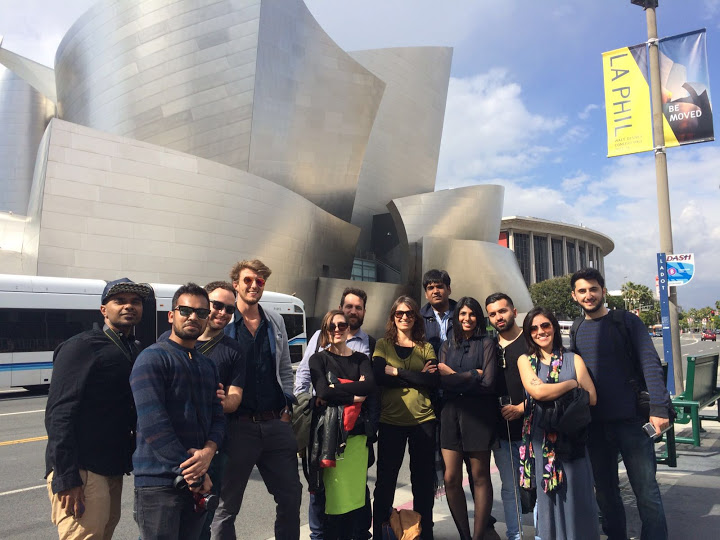Research Trips – Digital Matter Intelligent Constructions
Should we continue constructing rigid and fixed structures, or can buildings begin to think?
Digital Matter Intelligent Constructions [DMIC] Research Studio took its students to California, with the objective of understanding what is the next architectural design. Along this trip, students have been confronted with iconic architectures and advanced practices and institutions, focusing on the dynamic behaviour of our environment and exploring how intelligent construction goes beyond assigning material properties into rigid construction components.
Students started their trip by visiting the city of Los Angeles, getting to know the Sci-Arc Laboratory with the director Hernan Diaz Alonso and discovering the UCLA Robotic Laboratory by the hand of Greg Lynn.
After a surfing session in Venice Beach, the group headed for a two-day trip to San Francisco and Silicon Valley, driving through the historic Pacific Coast Highway.
Located in the southern portion of the San Francisco Bay Area, Silicon Valley is a leading hub and startup ecosystem for high-tech innovation and development, accounting for one-third of all of the venture capital investment in the United States.
On students agenda the visits to Google and Apple Headquarters, Facebook Campus but also small startups and emerging institutes such as the Singularity University a think tank that offers educational programs applying new technologies to new business models.

Digital Matter Intelligent Constructions tackles questions regarding material intelligence. Smart materials such as shape-memory materials, piezoelectric, thermoelectric or bio-materials able to adjust their properties to different environmental conditions, allow to programme buildings at a nanoscale, and open up a series of applications on an architectural scale and industrial applications.
Learn more on Digital Matter Intelligent Constructions [DMIC] research line by clicking here.